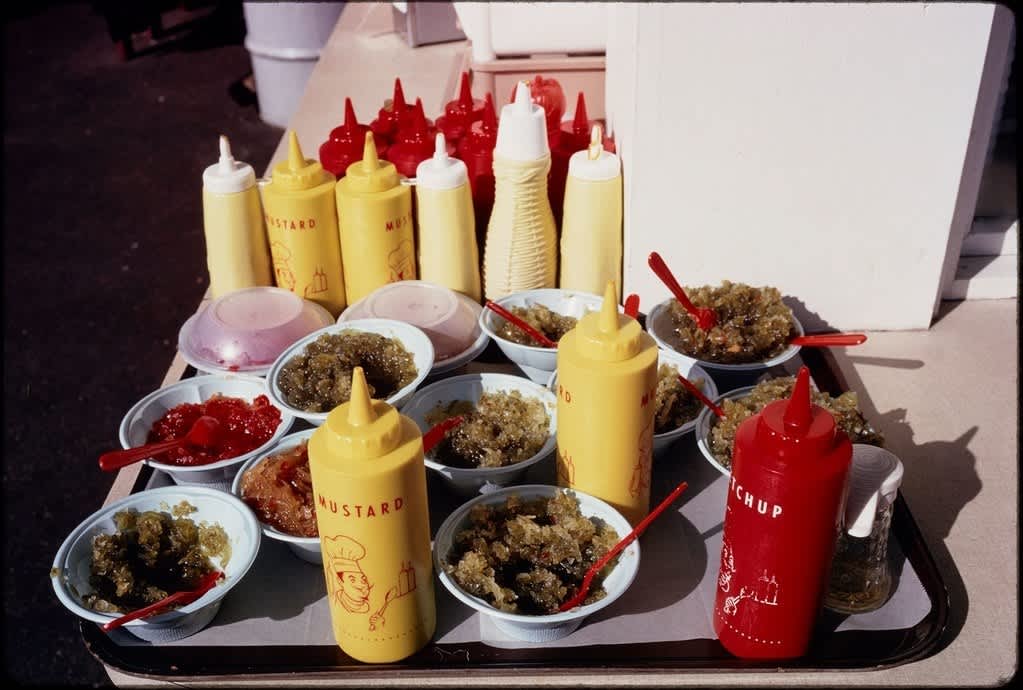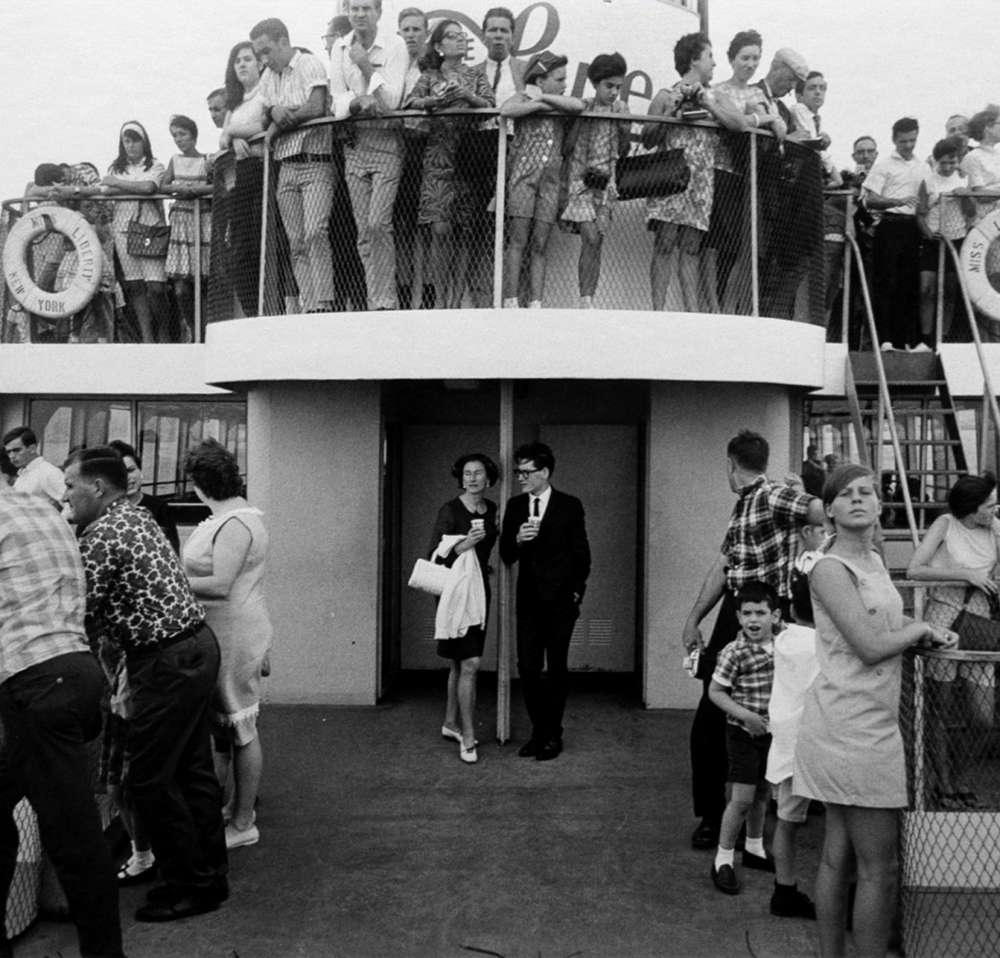Garry Winogrand once defined a photograph as “what something looks like to a camera.” Keep that in mind when viewing “Garry Winogrand: Color,” a fiercely pleasurable show, at the Brooklyn Museum, consisting mainly of hundreds of digitally projected Kodachrome slides, most from the nineteen-sixties. Winogrand, the all-time champion of street photography, died in 1984, at the age of fifty-six. He is most famous for his hyperkinetic shots of unaware—or wary too late—pedestrians, taken with high-speed black-and-white film. The relatively long exposures required by color film steered him to subjects more static: people seated rather than walking, or at a beach instead of on the street. Winogrand sometimes carried two cameras, often with a 28-mm. wide-angle lens: one loaded with black-and-white film and the other with color. But, in every case, the camera appears to have had a will of its own.
In film footage of him at work, a Leica repeatedly jumps, hungrily, to his eye and, a split second later, darts away, sated—going about its business while Winogrand chats with an interviewer. His part in the action looks like the gesture of a man brushing off a fly. (If a subject noticed what had happened and seemed startled, Winogrand would smile disarmingly, nod, and even pause to talk.) The shots taken may never have been seen by anyone, including the shooter. Winogrand left behind several thousand unproofed (not printed to contact sheets) and undeveloped rolls of film. Indulging his cameras drove him, as the toil of reaping their harvests did not. One of his wives (there were three) said that living with him was “like being married to a lens.” But what a lens!


